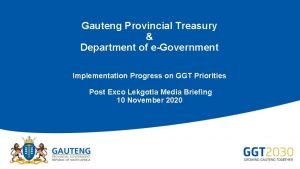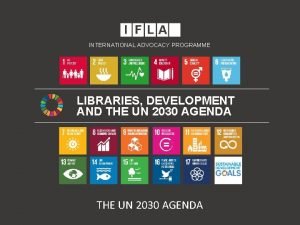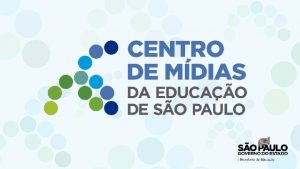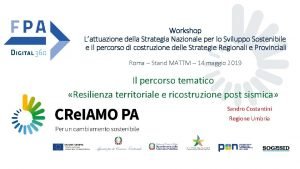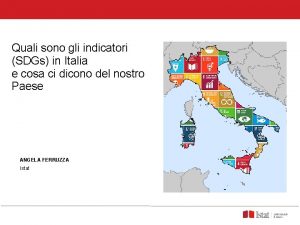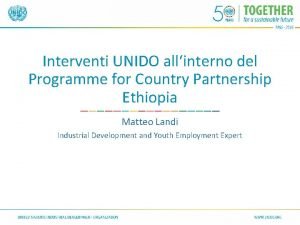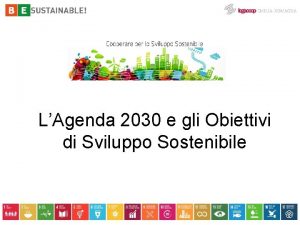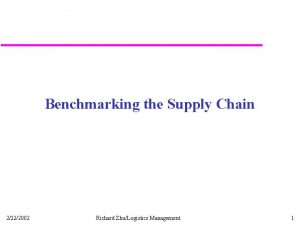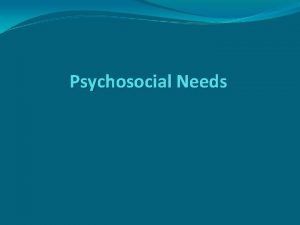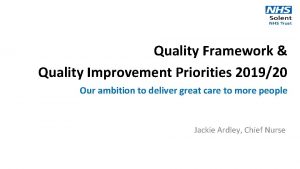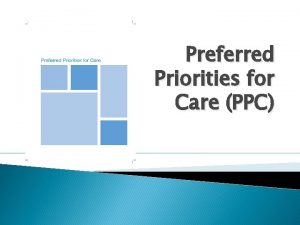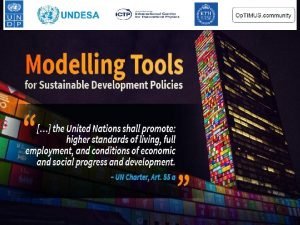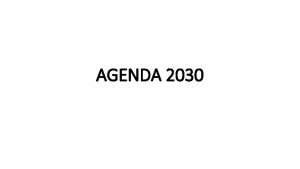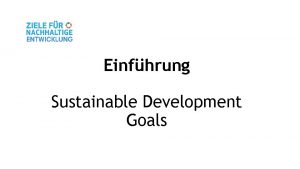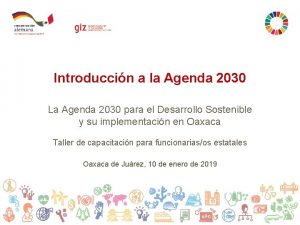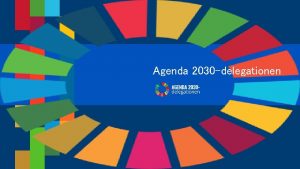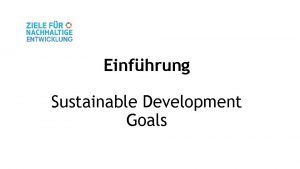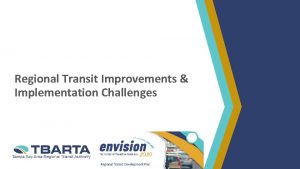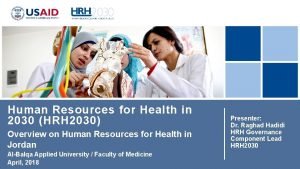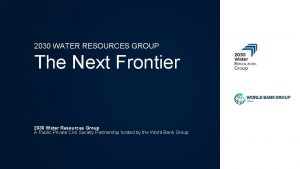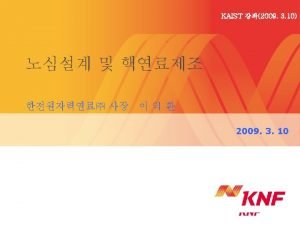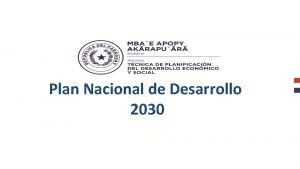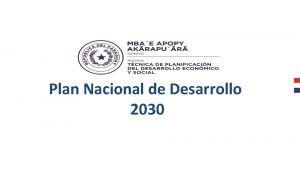Regional Priorities for Implementation of the 2030 Agenda






















- Slides: 22

Regional Priorities for Implementation of the 2030 Agenda Statistics and mainstreaming of the SDGs to address vulnerability

Perspectives on … Answers to … • Which groups are amongst the most vulnerable in Asia and the Pacific and are currently being “left behind”? Where do the most important regional vulnerabilities lie? • What approaches and tools, including through modelling, can be used to facilitate mainstreaming of SDGs in policy frameworks? • How can better data and more effective and integrated analysis support progress on identifying regional priorities and reducing vulnerabilities? • What are potential roles and priority areas for regional action, coordination and networks?

Reduce social exclusion & inequalities Realizing human rights of all Cross-cutting: prerequisite for full realization of SDGs Goal 5: Achieve gender equality & empower all women & girls Goal 10: Reduce inequality within & among countries

KEY SOCIAL DEVELOPMENT TRENDS

Persisting or rising inequalities in Asia & Pacific Spectacular economic growth, impressive poverty reduction … But, persisting or rising inequalities within countries

Social exclusion of vulnerable groups • Marginalized groups continue to face inequalities in opportunity • Lack of access to healthcare in most of South and South-West Asia • Gender inequality persistsunequal opportunities and outcomes, driven by discrimination and gender stereotypes

Population and Demographic Change: Urbanisation & Internal Migration • Half of the region’s population lives in urban areas • Growing at 2. 2 per cent per year • … will double in the next three decades

Population and demographic change: Population Ageing Fastest ageing region in the world

Population and Demographic Change: International Migration In 2015, over 95 million lived outside their country of birth … almost 50 percent increase since 1950 Mainly as temporary labour migrants Who, despite their contributions Lack access to social protection

Tackling Inequalities • Place the 2030 Agenda at the centre of national development strategies • Develop institutional mechanisms and build capacity for policy coherence, consistency and coordination • Mobilize resources • Harness technology and innovation • Develop multi-stakeholder platforms

An Analytical Framework MAINSTREAMING SDGS IN NATIONAL POLICY FRAMEWORK

Mainstreaming SDGs in national policy framework: Identifying priorities • Country implementation: unique circumstances, levels of development, and capacities • An example analytical framework: relevant interactions among different goals and targets; simulate and evaluate the benefits of alternative policies and pathways for progress • Contribute to national deliberations on the design of national plans and strategies for SDG adaptation.

Analytical Framework • SDGs is a complex system of many interrelated goals and targets, with potential spillovers and trade-offs • SDG system based on economic, social, and environmental data from 169 countries of the world.

Construct measure of SDG capacities

• Suggest pathways that maximize these capacities, taking into accountry unique circumstances.

Pathways: Pakistan • Vision 2025 contributes to progress towards inclusive and sustainable development if priorities are placed on health, education and infrastructure. • For areas not covered by Vision 2025, especially on gender equality and women’s empowerment, an appropriate framework & various support measures are crucial to ensure that no one will be left behind.

Data, data…. … high-quality, accessible, timely, reliable and disaggregated by income, sex, age, race, ethnicity, migration status, disability and geographic location and other characteristics relevant in national contexts

Global Indicators SDGs 96 indicators have clearly defined methodologies and are generally available … the rest are not readily available, despite existence of methods (51) or lack methodologies (82) 17 Goal s 169 Targets 230 Indicators

DATA Hurdles Limited scope of data collection programmes Insufficient frequency & reliability from existing programmes Administrative data systems under-used, e. g. , CRVS Lack of measurement standards and guidelines Data are not available fast enough Inability to produce data on vulnerable groups

Big Data applications offer new opportunities to identify social vulnerability and poverty. LEVERAGING DATA AND STATISTICS TO ACCELERATE SDG IMPLEMENTATION

Data and Statistics for SDG Implementaton • Advocacy for strong political commitment to and sustained investment for statistical capacity of national statistical offices including to coordinate and improve production, dissemination and use of data • Promote increased use of data and statistics and regional knowledge exchange for follow-up and review • Lead norm-setting in areas of high and shared policy priority • Influence global statistical methodological development work in support of regional priorities • Galvanize and enhance partnership support

Perspectives on … Answers to … • Which groups are amongst the most vulnerable in Asia and the Pacific and are currently being “left behind”? Where do the most important regional vulnerabilities lie? • What approaches and tools, including through modelling, can be used to facilitate mainstreaming of SDGs in policy frameworks? • How can better data and more effective and integrated analysis support progress on identifying regional priorities and reducing vulnerabilities? • What are potential roles and priority areas for regional action, coordination and networks?
 Ggt2030
Ggt2030 Un 2030 agenda
Un 2030 agenda Agenda 2030 geografia
Agenda 2030 geografia Italia agenda 2030
Italia agenda 2030 Agenda 2030
Agenda 2030 Agenda 2030 numero 15
Agenda 2030 numero 15 Ol 2030
Ol 2030 Agenda 2030
Agenda 2030 Agenda 2030
Agenda 2030 Territorial agenda 2030
Territorial agenda 2030 Schema agenda 2030
Schema agenda 2030 Agenda 2030
Agenda 2030 Che cos'è l'agenda 2030
Che cos'è l'agenda 2030 Agenda sistemica y agenda institucional
Agenda sistemica y agenda institucional Supplier and distributor benchmarking
Supplier and distributor benchmarking Goals and priorities
Goals and priorities 6 quality priorities
6 quality priorities Six key ministerial priorities
Six key ministerial priorities Volkswagen of america: managing it priorities
Volkswagen of america: managing it priorities Preferred priorities for care
Preferred priorities for care Chapter 18 healthy family and peer relationships
Chapter 18 healthy family and peer relationships Thread priorities
Thread priorities Core priorities
Core priorities
